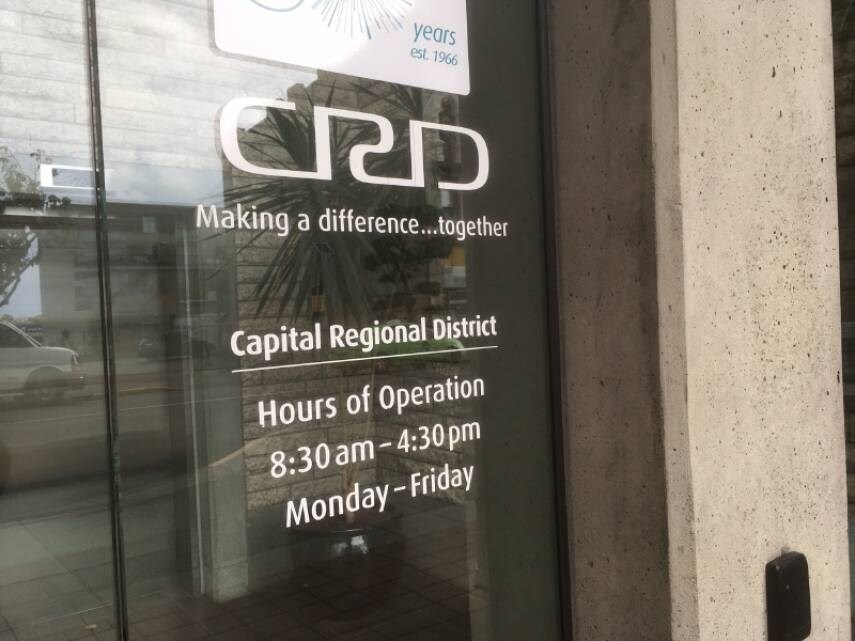Capital Regional District directors have approved a $611-million provisional budget for next year that would see an average tax increase of 1.7 per cent for property owners.
The actual increase on your tax bill depends on the municipality you live in, based on the CRD services your municipality participates in.
Places such as Saanich, Sooke, Salt Spring Island and the Southern Gulf Islands would face an increase of around three per cent, with the highest in Saanich at 3.7 per cent. View Royal and Metchosin residents would see small decreases of less than one per cent, while Langford residents would have a 1.9 per cent tax decrease.
The CRD is seeking public input on the provisional budget, which is subject to changes before going to the board for final approval in March. You can share feedback online.
Three climate initiatives in the CRD’s recently adopted climate action plan would add $900,000 to the final budget if two-thirds of municipalities approve an increase to the maximum allowable funding requisition for the CRD’s Climate Action and Adaptation Service.
CRD board chair Colin Plant said the potential additional cost to the budget is likely to be offset somewhat by anticipated growth in the region, which means more households paying taxes for CRD services. Year-end adjustments and revised assessment numbers will also affect the final figures.
The climate action plan, developed in response to the board’s declaration of a climate emergency in 2019, aims for a 61 per cent reduction of regional greenhouse gas emissions by 2038, based on 2007 levels, and a 45 per cent reduction in corporate emissions by 2030, based on 2007 levels. The plan also sets 2050 as the goal for the CRD to reach net-zero corporate emissions, the result of operating vehicles, equipment, buildings and facilities.
A 2018 study pegged the region’s emissions at about 1.7 million tonnes, which was relatively unchanged from 2007, despite population growth, according to the CRD Climate Action Strategy. Almost half of all emissions come from cars, trucks and buses, while buildings account for about one-third.
The plan focuses on integrating climate action priorities into all decision-making, ensuring sustainable land use with concentrated growth in designated areas, encouraging low-emission transportation options and energy-efficient buildings, and protecting ecosystems.
The provisional budget also reflects a new approach to acquiring land for parks, which will see the CRD shift to a financing model rather than purchasing land outright.
The change, similar to getting a mortgage to buy a home instead of saving up the full cost, will help the CRD continue to purchase land even as prices increase, Plant said.
“If we simply wait until we have enough money to buy every time, there is the potential that we will be priced out of the market,” he said.
The $611-million provisional budget reflects a decrease from this year’s budget of $708 million. The proposed budget calls for $371 million in spending on operations, up from $352 million in 2021, and $240 million in capital spending, down from $356 million in 2021.
Capital projects include building and improving wastewater facilities on North Pender Island, the Saanich Peninsula and commissioning the core area treatment system, construction of regional trails and improving drinking water infrastructure.



